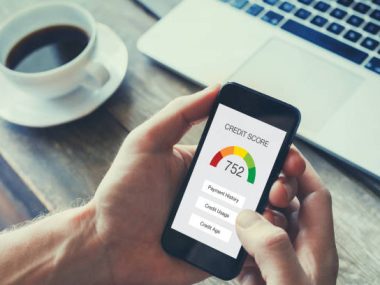In a world where financial complexity is often the norm, debt consolidation is a beacon of hope for those struggling with multiple debts. But what exactly does it entail, and how can it pave the way for financial freedom? This guide will explore the concept of debt consolidation, offering clear steps and strategies to regain control of your financial landscape.
What Does It Mean to Consolidate Debt?
The journey towards financial clarity often begins with understanding how to consolidate debt. This financial strategy involves taking several different debts with varied interest rates, monthly payments, and due dates and rolling them into a single loan. The advantages are manifold. Debt consolidation can provide:
- A lower overall interest rate
- More manageable monthly payments
- A streamlined repayment timeline
For busy individuals, this simplification means exchanging a maze of obligations for one distinct path. Various tools, like a personal consolidation loan, a balance transfer credit card, or a home equity loan, come to the rescue here. But beware, the road to successful debt consolidation requires you to wear the cloak of discipline tightly and create a sustainable plan that avoids the pitfalls of new debt accumulation.
Embarking on the Debt Consolidation Journey
To truly harness the power of debt consolidation, consider the following:
- Financial self-reflection: Understanding your current debt situation is paramount.
- Tool selection: Choose between personal loans, credit cards, etc., keeping an eye on rates and terms.
- Long-term planning: Avoid new debt to ensure this consolidation leads to a positive financial transformation.
How Can I Start the Process of Debt Consolidation?
Embarking on the debt consolidation journey can often seem like plotting a course through uncharted waters. To set sail:
1. Total up your debts: Gather all existing debts to understand what you’re working with.
2. Credit score reconnaissance: Your credit score is the lodestar that will guide you to favorable loan terms.
3. Explore the seas of options: weigh the pros and cons of personal loans, balance transfer cards, and more to map out your route.
4. Choose a trustworthy navigator: Select a lender that promises a trustworthy passage towards debt consolidation.
5. Signal for transition: Apply for the loan or card of choice and begin centralizing your debts into one vessel.
Detailed Steps to Commence:
- Ensure your total debt is gathered meticulously.
- Investigate your credit score through credible sources.
- Analyze and compare debt consolidation options in-depth.
- Vet lenders through reviews and detailed term comparisons.
- Apply and consolidate with confidence and precision.
What Types of Debt Can Be Included in a Debt Consolidation Plan?
Understanding the scope of your financial flotilla is crucial when considering consolidation. Typically, the more common debts include:
- Credit card debt: is a common adversary, often carrying high interest rates.
- Personal loans: Various loans can be consolidated to streamline finances.
- Medical bills: an unexpected foe, significant in size, yet eligible for consolidation.
- Student loans: a relentless tide of payments that can sometimes be brought under the consolidation umbrella.
- Utility bills and other debts: Clear the deck of miscellaneous debts to steer towards smoother financial waters.
The Consolidation Fleet:
- Credit cards and personal loans can lead the armada, offering significant relief.
- Medical and student loans may also join the ranks, lightening the load.
- Smaller debts like utilities should not be overlooked, as they contribute to overall financial weight.
Are There Any Risks Associated with Consolidating My Debts?
Venturing into the world of debt consolidation is not without potential hurricanes:
- Extended payment horizons: A promise of reduced payments, but at the cost of potentially more interest over time.
- Credit dangers: Missed payments on new agreements can scuttle your credit score.
- Collateral at stake: Secured loans demand assets as guarantees, risking valuable treasures like your home or car.
- Hidden costs: Fees and penalties, like buried treasure, may surface unexpectedly, adding to your debt’s size.
- Old habits: Without charting a new course in spending behaviors, one might be sailing back into the troublesome waters of debt.
Navigating the Risks:
- Consider the total interest cost over an extended timeline.
- Be vigilant with your new payment schedule to protect your credit score.
- Weigh the risks associated with secured loans very carefully.
- Research any additional fees involved in potential consolidation plans.
- Commit to new, sustainable financial habits post-consolidation.
Will Consolidating My Debts Affect My Credit Score?
The compass of debt consolidation often points towards an initial dip in your credit score, a small price to pay for the broader horizon it offers. Key impacts include:
- Initial score drop: The necessary credit inquiries may nudge your score downwards.
- Improvement through consistency: Timely payments can rebuild and strengthen your score.
- A better credit mix: A balanced portfolio showcasing responsible management can be beneficial.
- The age factor: Consider closing old accounts, as they contribute to your credit’s maturity.
Steering Your Credit Score Towards Favorable Shores
- Expect a temporary drop due to credit inquiries.
- Regular on-time payments will set a course for an improved score over time.
- A consolidation loan could lower your overall credit utilization, a mark in your favor.
- Consider the long-term implications of closing old credit accounts post-consolidation.
To embark on the debt consolidation journey is to set sail on a voyage towards financial tranquility. Through this guidance, we’ve charted the seas from the need for strategic consolidation to the various types of debt that can be included, the risks, and the effects on credit scores.
Each step is vital in your quest to regain control of your fiscal destiny. Remember, this quest is not just about simpler payments—crafting a sustainable financial lifestyle where the treacherous waters of debt are left far behind.
Please Help Share This Post









